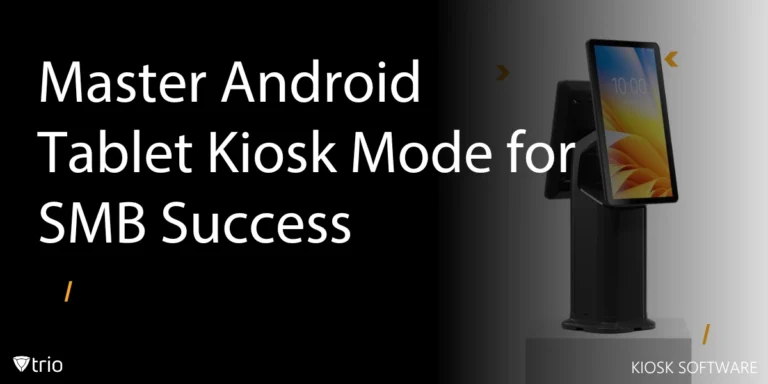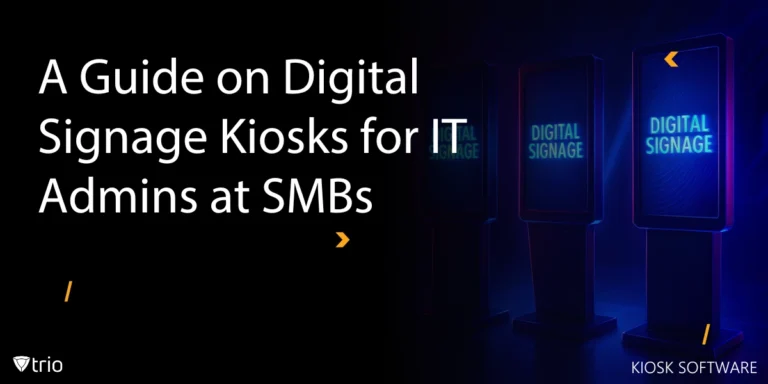Managed IT services refer to the process of outsourcing the responsibility for maintaining and managing a company's IT infrastructure and systems to a third-party provider. These companies are referred to as Managed Service Providers (MSPs), and they provide a variety of cybersecurity services like helpdesk support, network monitoring, and data backup and recovery. This way businesses can have access to a group of IT specialists who can proactively manage and monitor their IT environment, guaranteeing peak performance and security. This allows businesses to focus on their core operations while leaving the technical aspects to skilled professionals. Managed IT services can help businesses improve efficiency, reduce downtime, enhance security, and lower overall IT costs. In this blog, we will focus on different aspects of MSPs and their functionality for businesses of various sizes.
What Does an IT Managed Service Team Do?
To put it simply, an MSP and an IT managed service team can team up to provide a business with full-scope IT support. These teams handle a wide range of duties, like proactive system and network monitoring to spot potential problems before they become serious. They also offer routine maintenance and updates to keep systems operating smoothly, and end-user technical support for any IT-related problems. Managed service teams also play a key role in cybersecurity by implementing and managing security measures to protect against cyber threats, such as malware and phishing attacks. As an extension of an organization’s own IT department, IT managed service teams work closely with them to provide expert counsel and support for strategic IT initiatives.

Benefits of MSPs for Businesses and IT Admins
Businesses and IT admins can both benefit greatly from managed IT services. By assigning the day-to-day management of their IT infrastructure to professionals, organizations can boost productivity and efficiency. This frees up internal IT staff from being bogged down by regular maintenance duties and enables them to concentrate on strategic activities and projects. Another advantage of MSPs is proactive monitoring and maintenance, which decreases downtime, improves system reliability, and helps stop potential issues before they get worse. Also, managed services can enhance cybersecurity posture by implementing advanced security measures to protect against cyber threats. From a cost perspective, businesses can benefit from predictable monthly costs and avoid the need for large upfront investments.
Managed IT services for small businesses can help IT administrators by bringing expert knowledge and resources to the table, reducing the load of managing complex IT tasks, and enabling them to stay informed of emerging trends and technologies. in other words, by increasing operational efficiency, boosting security, cutting expenses, and promoting corporate growth, managed IT services software provides a win-win option for both companies and IT administrators.
Managed IT Services vs. Cloud Services
Managed IT services software and cloud services are two distinct solutions in the realm of information technology. As mentioned above, managed IT services refer to outsourcing IT operations to a third-party service provider who takes on the responsibility of managing and maintaining the client's IT systems. On the other hand, cloud services involve the delivery of computing resources, such as servers, storage, and applications, over the Internet. While managed IT services focus on managing and maintaining a client's existing IT infrastructure, cloud services offer a flexible and scalable platform for deploying and accessing IT resources. In essence, managed IT services are a comprehensive solution for managing IT operations, while cloud services provide a flexible and scalable platform for accessing resources.
Steps to Effective Decision-Making About IT MSP
Effective decision-making about selecting an MSP involves several key steps. Firstly, it is crucial to clearly define the organization's IT needs, objectives, and budget constraints. Understanding what services and support are required will help in evaluating potential options. Next, conducting thorough research on different MSPs is needed. This step includes reviewing their track record, client testimonials, certifications, and service offerings. It is also important to consider the MSP's experience in the industry and their ability to scale with the organization's growth. The final step involves negotiating a detailed service level agreement (SLA) that clearly outlines the scope of services. It also needs to include aspects such as performance metrics, response times, and potential costs.

MDM Solutions and MSPs Hand in Hand
Mobile Device Management (MDM) solutions and MSPs are closely related in the context of IT management. In short, MDM solutions are software tools that allow organizations to centrally manage, monitor, and secure devices. These solutions enable IT teams to enforce policies, configure settings, and deploy applications. While MDM solutions focus on device management and security, MSPs offer a broader range of IT services and support.
The connection between these two lies in the ability of MSPs to use MDM tools for enhancing the overall IT system and security. By integrating MDM solutions into their service offerings, MSPs can help organizations simplify device management and distribution processes, improve data security, and ensure regulatory compliance. This integrated approach allows organizations to benefit from a comprehensive IT management solution that covers both traditional IT needs and help manage mobile devices.
Trio, as an MDM solution, is designed to help businesses manage their devices regardless of their operating system from a centralized place. Trio equips IT admins with the right tools to create security, configuration, and compliance profiles to not only secure corporate-owned and BYODs but also to ensure they follow regulatory frameworks. Trio also offers an in-depth vulnerability management feature, helping businesses detect vulnerabilities as they emerge and resolve them. In Trio's future roadmap, there is also the ability to manage MSPs, making it an ideal device management solution for businesses of various scales and industries.
Overall, MSPs streamline operations and enhance productivity by taking over routine maintenance tasks and allowing internal IT teams to focus on strategic tasks. Proactive monitoring and maintenance ensure system reliability and prevent issues from escalating. Also, they offer strong cybersecurity defenses, protecting businesses from potential cyber threats. MSPs can even extend their service offerings by integrating with MDM solutions. Thus, managed IT services are a strategic asset that can drive business growth and efficiency.
Ready to elevate your device management and ensure unparalleled security for your business? Start your journey with Trio's MDM solution today. Sign up for a free demo and discover how our comprehensive tools and features can streamline your IT operations, enhance security, and ensure compliance across all devices. Don't miss the chance to transform your IT management with Trio.
Get Ahead of the Curve
Every organization today needs a solution to automate time-consuming tasks and strengthen security.
Without the right tools, manual processes drain resources and leave gaps in protection. Trio MDM is designed to solve this problem, automating key tasks, boosting security, and ensuring compliance with ease.
Don't let inefficiencies hold you back. Learn how Trio MDM can revolutionize your IT operations or request a free trial today!





